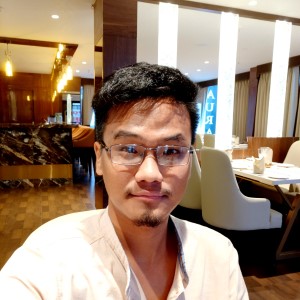Can Media Break the Ethnic Barriers?
Analysis of Hornbill Weekend Horn
By Suanmuanlian Tonsing
Research Scholar

Ethnicity and ethnic consciousness has always been a part of the district of Churachandpur, Manipur. And this trend, if not diagnosed at the right time, will continue to carry on with the generation that eventually starts to populate the district. Tackling the issue or the consciousness has brought about differential argument and controversies in terms of ‘isms’ between and across ethnic groups and elites since several decades ago. Civil societies, student unions and other organizational bodies have strongly voiced their own discourse and arguments continuously.
However, contemporary Churachandpur is yet to be healed from this plague of subjective consciousness. Within such framework of clinging to one’s own ethnicity, the role of media has become extremely significant and invites arguments as well as intensive analysis from the parts of the scholars and individuals who like to pen their analysis down. Hornbill Digital Network (HDN), being one of the oldest media industries in the district, with its intervention across the populations in terms of its inclusivity and its conscious or unconscious attempt of deconstruction of ethnic boundaries through ‘media’ as a platform has brought about new wave and direction in Churachandpur, well at least according to my analysis. For starters, Hornbill Digital Network (HDN) in its Hornbill Weekend Horn has been conducting interviews on different successful personalities in Churachandpur with no boundaries on ethnic lines since a couple of years back. This means that this media is inclusive enough to entertain and develop a sense of belongingness across different ethnies in the district. Although some may have analyzed that their motives could be for marketing strategies- to enlarge their market, capital, relations of production, etc., these are however at least of no concern for me in this argument, because what they does is something else, something different from the other mainstream media. They have inclusively interviewed personalities from different ethnies communities such as the Chin, Hmar, Gangte, Mizo, Paite, Simte, Thadou Vaiphei and Zou. The brief analysis provided further will enrich us with perspectives beyond the quotidian parlance, a perspective that show us the beauty of the role of media.
Media without boundaries
Essentially, what HDN is reproducing is nothing but the promotion of each individual’s dialects without the attempt for intervening in the other normative culture. From the interviews, if one analyze closely, they should be able to see the aesthetics of exchanging communications in different yet almost quasi-dialectics between the interviewer and the interviewee while such meanings within the communication can be transcribed and understood by the encoder (interviewer) and decoder (interviewee) without much complexity (say, for instance, the interview conducted by Mang Taithul with Paoneo Haokip on 22nd March 2019). Taking example from our very close neighbours- the Nagas, who comprises of over 16 tribes which have their own dialects requires communication through Nagamese due to distinction of dialects across the different tribes. But the inspirational significance that can be found in these tribes is their uniformity under the nomenclature ‘Naga’ despite certain complexities in their social system and structures. In contrary to the Nagas, our case is somewhere in the opposite direction. The aesthetics of the verbal exchange of communication across the Chin/Mizo/Kuki/Zomi (Zo) community is something significantly different. It cannot be found anywhere else in the country. This shows nothing but the significance of our belongingness from the same descent and origin which we all refer to as Chhinlung/Sinlung/Khul. HNN has been able to reproduce nothing but the re-realisation of closeness in terms of cultural orientations among the different tribes in Churachandpur. It also latently attempts the detachment from ethnocentric attitudes and egoistic orientation of the individual’s subjective consciousness (one’s ethnicity). So long as such understanding of exchange of communication takes place in this form, the tendency of cultural domination through different forms available within the social structure (which was very much significant since the mid 20th century in Churachandpur) may essentially challenge the idea of forced assimilation and domination within these multi-ethnic communities. Therefore, multiculturalism in this region of the state may be possibly entertained if the direction introduced by HNN is carried forward in a more or less optimistic way.
One should be conscious that there is no culture or tradition any more superior over other in the context of Churachandpur. So long as cultural continuity of one’s own group goes hand in hand with the recognition and deliverance of respect towards other cultures, the problem (at least the question of assimilation and domination) may be solved or at least eased down. How can the aesthetics of media as a potential bridge between these ethnies be ignored when the tendency to detach from subjective consciousness is right in front of us? What Hornbill has interestingly started seems to show how the masses have been inclined themselves towards the willingness for connecting back the dispersed and lost tribes. I hope that this technological implication may bring about qualitative proximity to the different ethnic communities so that equity and respect towards each others’ community may be essentially achieved. Can media shape our society into a functional and ethnic friendly space? Well, it is too early to tell that, for now. But the potentiality of media as a bridge across the ethnies should be essentialized and manifested extensively.
----------------------------------------------------------------------------------------------------------------
*The author is a Research Scholar in Department of sociology, Delhi School of Economics under University of Delhi.
Contact details:
fb/instagram: Muanlian Tonsing
email: This email address is being protected from spambots. You need JavaScript enabled to view it.
Suggested Readings on Media
Barrat, David (1986). Media Sociology: Society Now. New York: Taylor and Francis Routledge
Herman, S. Edward and Chomsky, Noam (1988). Manufacturing Consent: The Political Economy of the Mass Media. New York: Pantheon Books.
